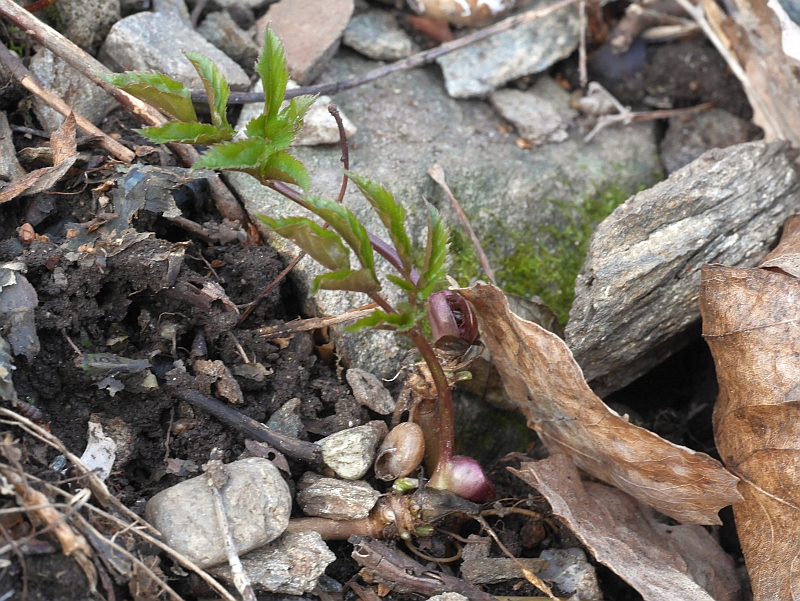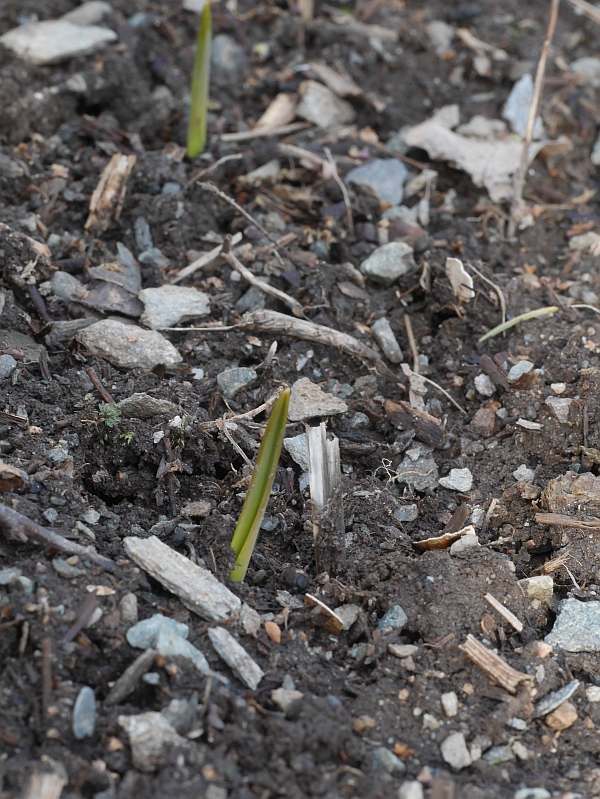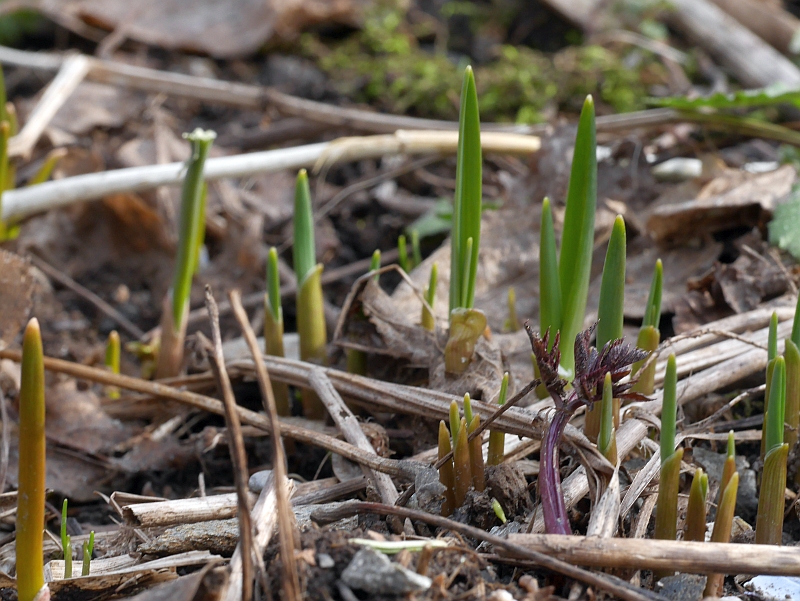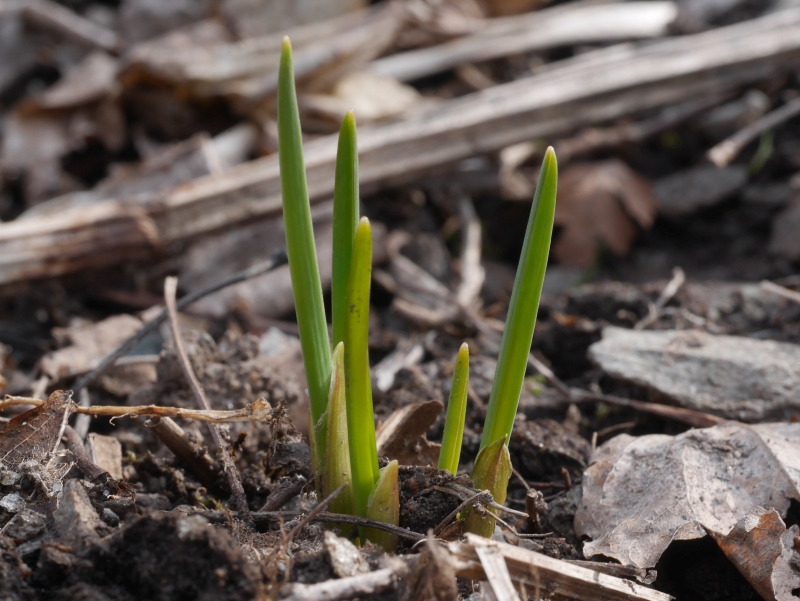Today it reached an unusually warm 16C here which encouraged the first bumble bees and honey bees out! The picture shows the greens (and whites) used in tonight’s soba (buckwheat noodle) stir-fry:
Hogweed (Heracleum spp.) shoots (far left, from the cellar); top row: Dystaenia takesimana (outside), chicons (chicory shoots; cellar), horseradish shoots (cellar), garlic and Allium scorodoprasum shoots (outside), Allium cernuum shoots (outside); Below from L to R: Dandelion (Taraxacum) shoots from the cellar, ground elder (Aegopodium podograria) shoots (outside), lesser celandine (Ficaria verna), wild buckwheat (Fagopyrum tataricum) seed sprouts (living room), nettle shoots (Urtica dioica), hedge mustard (Alliaria petiolata) and (bottom right) Hablitzia tamnoides shoots.
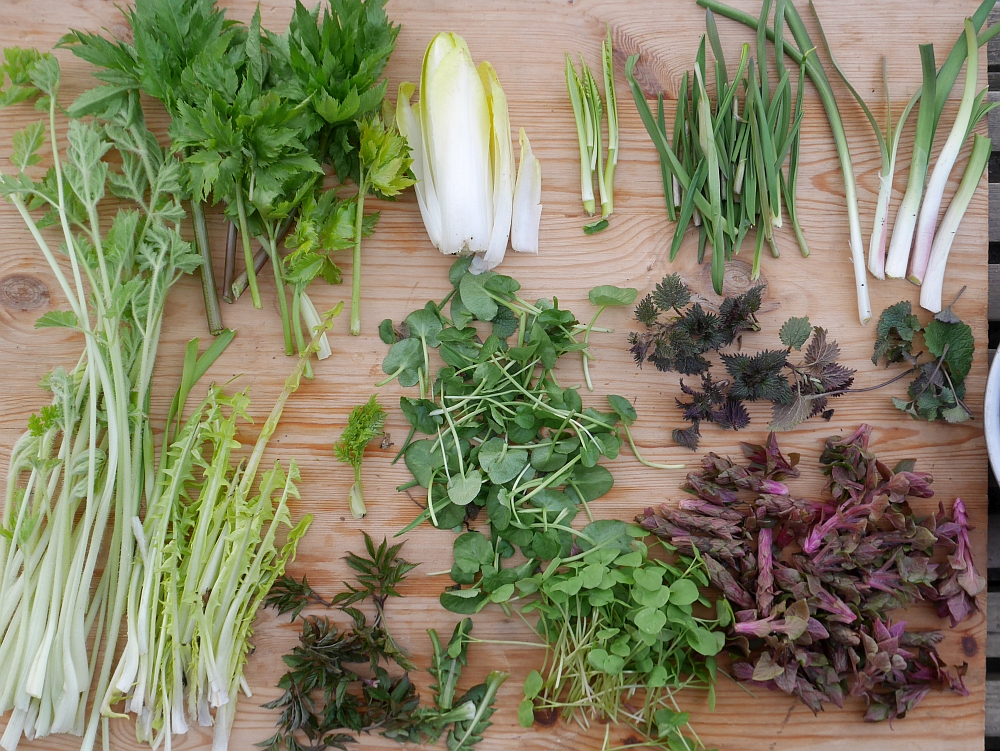
5 years ago this week, I made a salad with 140 ingredients all harvested locally without using any additional energy than is available in my house and cellar (no greenhouse; no freezer; no fermenting; no plastics involved). This was well planned as I had been asked to provide a salad and other ingredients for a 10-15 course 4 hour dinner at the now Michelin star Credo restaurant in Trondheim in collaboration with the Kosmorama film festival (the main theme was films about food and Michael Pollan’s film in Defense of Food was shown).
The 11 categories of ingredients included in this salad, how it was planned so that everything was available in early March, and the recipe can be read about on my blog here: https://www.edimentals.com/blog/?p=10214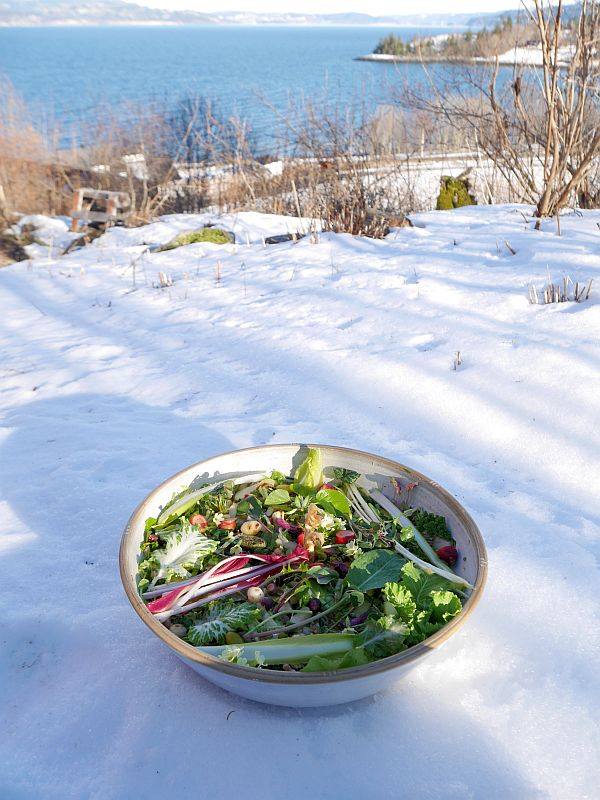
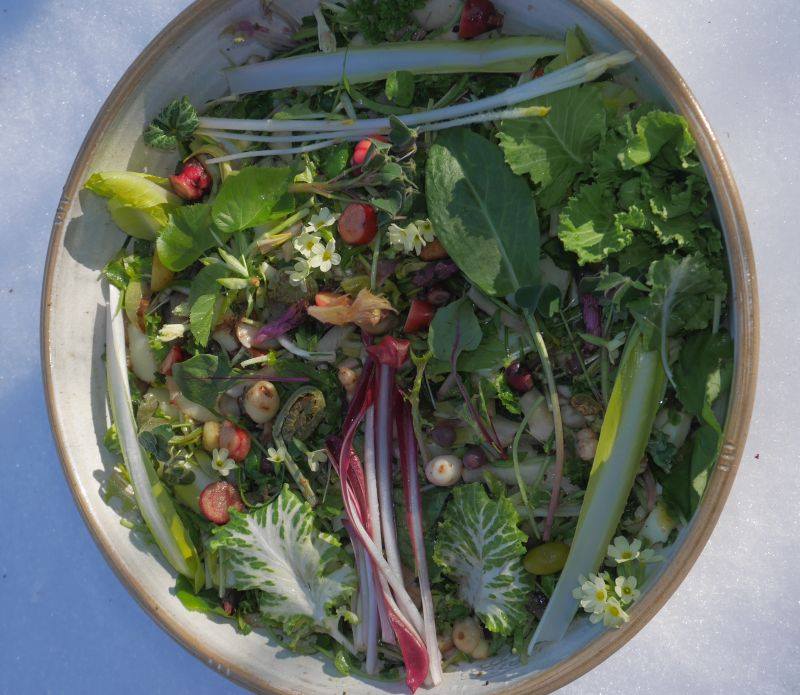
It’s always a surprise when I’m woken to the song of a wren (gjerdesmett) in the garden at this time of year. This is not only the second smallest bird in Norway, but along with the smallest bird goldcrest (fuglekonge) they rely almost only on natural food and don’t come to bird feeders. It’s been a relatively snow rich winter with stable conditions over long periods, but somehow this bird has made it through the winter. There have been reports of wrens regularly through the winter in this area, so it’s likely that it has overwintered (some of the local population migrate to milder areas in western Europe). I haven’t heard them in the daytime yet this year, so it’s probably spending the night in one of the bird boxes in the garden and finding food elsewhere!
I wrote about harvesting and eating myoga (Japanese ginger / Zingiber mioga) here in Malvik for the first time in 2020 here:
It was grown in a cold room in the house all year as previous experience had shown that outside plants managed to survive our winter but that the plants started sprouting very late (June) and hardly grew during the summer. I suspect that although they are relatively hardy they need much warmer summer temperatures than we can offer in this part of Norway.
I decided to repot my plant today and also divide so that I can offer to a few members of Norwegian Seed Savers (KVANN) to try mainly in the warmer parts of Norway.
While transplanting I accidentally knocked off a couple of shoots, so I had a little taste at lunch with an olive oil / soy sauce dressing. Crunchy and mild tasting!
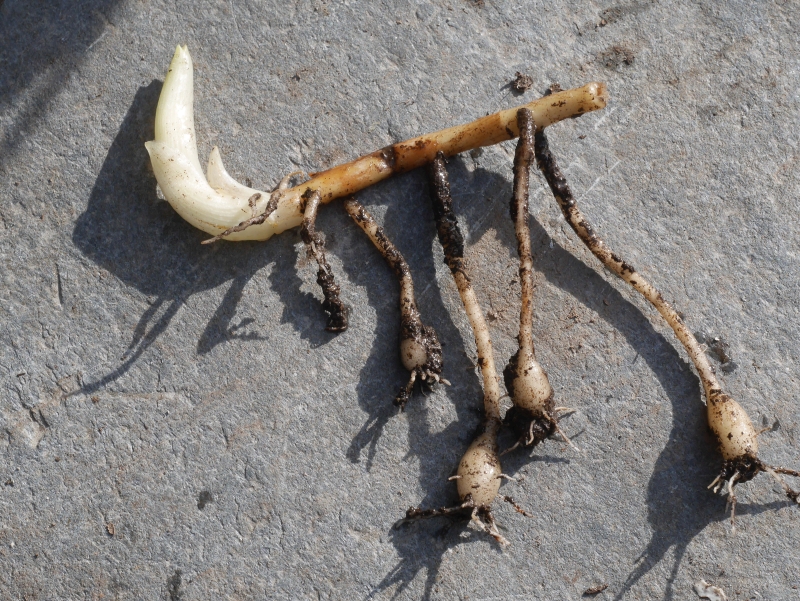

Sorry for the silence here on the Edimentals blog. I’ve been busy preparing to produce signs and plant labels for the Allium garden and the World Garden as well as working on various KVANN (Norwegian Seed Savers) projects. However, I had to share the joy of making the first salad where all (25) plants were collected outside in the garden (we’ve been making salads from cellar ingredients all winter). The snow is now gone from most of the garden and the temperature rose to above 5C today which has stimulated a lot of early shooting edibles. No complete plant list, but the salad included various Alliums, Rumex, Dystaenia, Taraxacum, Arabis, Hablitzia etc.
The first outside edible flower of 2022 was a Primula veris subsp. macrocalyx.
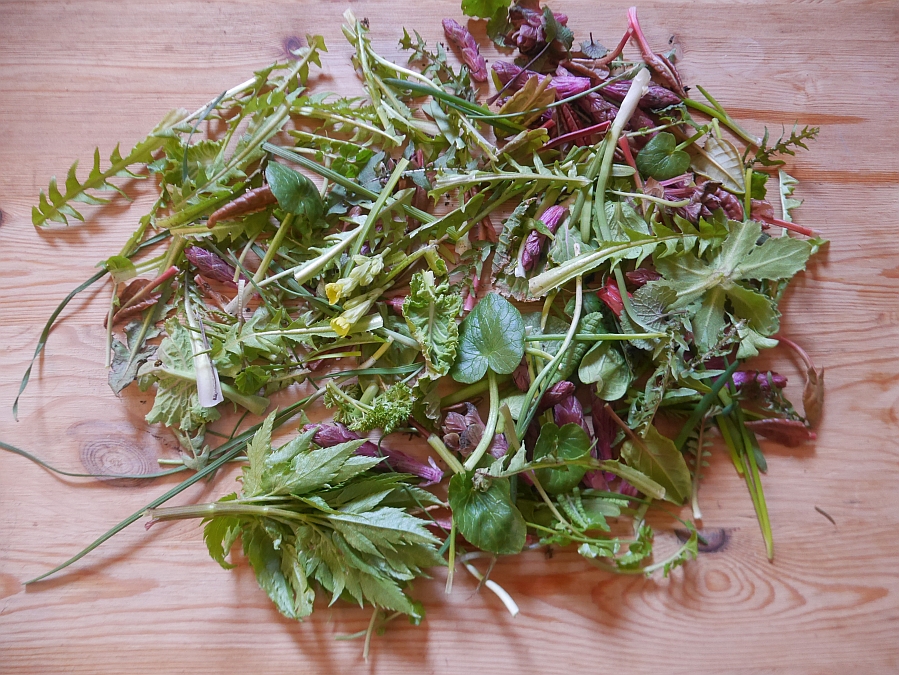
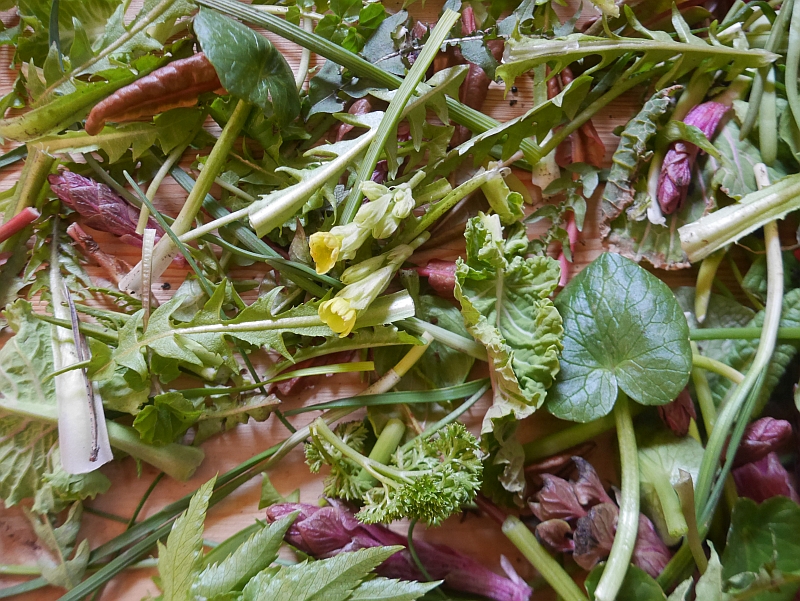
Perennial vegetables, Edimentals (plants that are edible and ornamental) and other goings on in The Edible Garden


